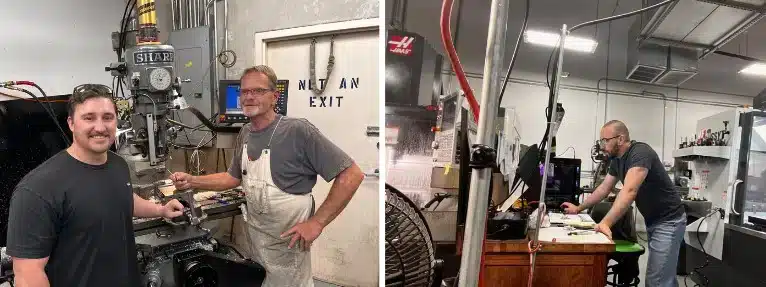We hear it often during Pulse visits: finding skilled employees is challenging. While the tide may be changing slowly, by all accounts, it’s not changing fast enough, which concerns many manufacturers. The gap between the experienced and future workforce, Gen Z, is growing.
But one Martin County manufacturer is facing the challenge head-on, just like everything else she’s faced as a small business owner, proud Army Veteran, and mom. “Discipline, reliability, willingness to learn, and a team-player mindset are difficult qualities to find in candidates,” says Monica Dirr, owner and CEO of Pace Machine and Tool. “What we are experiencing isn’t unique just to us or this area; it’s emblematic of manufacturing in America today; young people are unaware of the advantages and opportunities with a career in manufacturing, and we need to change that.” Fortunately for makers on the Treasure Coast, Indian River State College is laser-focused on retooling the next generation, as well as anyone considering a change in careers and wants to be upskilled to meet demand and find their next great opportunity in a higher wage industry.
Meet Edwin Rosales from Port St. Lucie and former U.S. Marine Colton Simpson from Palm City. Both were still undetermined about what they wanted to do. At the same time, they enjoyed solving problems and doing things with their hands and sensibly wanted to avoid accruing massive college debt. Both looked to IRSC for an answer and found it at The Eastman Center for Advanced Manufacturing. And the rest, as they say, is history.
Dirr looked to IRSC and worked with Natalia Chekhovskaya, the Advanced Manufacturing Center executive director, to identify and recruit Rosales and Simpson for a trial period on her shop floor. Under the guidance of highly skilled CNC machinist and foreman Scott Kehs, the two men are learning all the skills and responsibilities of making high-precision parts for the military. First, they started with manual machines and worked up to advanced computer-programmed 5-axis CNC machines. They are excited about being a part of the manufacturing industry and being role models for others in their generation who are leaning toward careers in the industry.
“Before meeting Edwin and Colton, I was distraught for this industry; manufacturing made America great, and it all but disappeared because we lost almost an entire generation of students who explored different careers and opportunities,” says Dirr. “But they give me hope; Natalia gives me hope, hope that there are leaders dedicated to replenishing this critically important workforce with eager minds and talented students who realize a career in manufacturing is as important, relevant, and rewarding as a career in medicine, banking, sales or other white-collar professions.”

